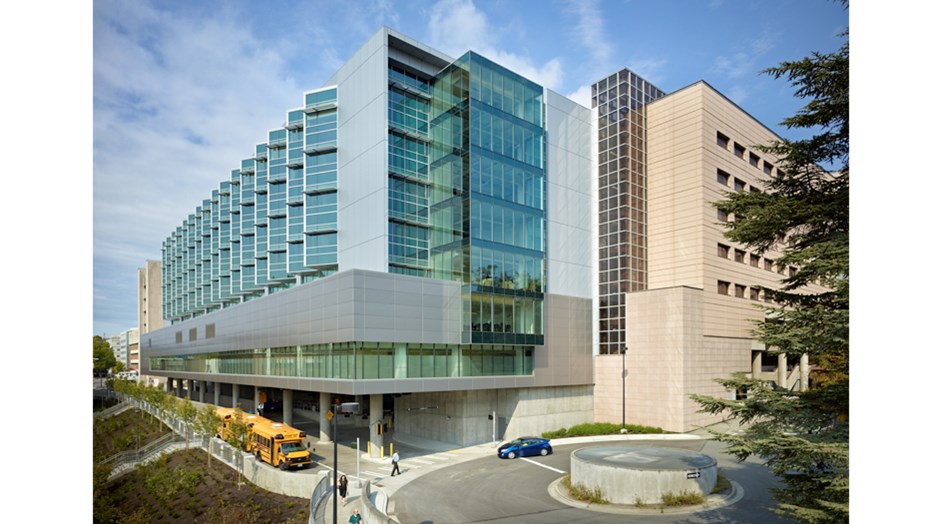Skanska provided preconstruction and construction management services for the 273,000-SF, nine-story (eight above-grade, one below-grade) expansion of the University of Washington Medical Center. The new tower included a 30-bed bone marrow transplant unit, 47-bed neonatal intensive care unit (NICU), NICU operating room, diagnostic imaging, two MRI, four new CT scanners, four new state-of-the-art interventional radiology and hybrid procedure rooms, materials management and loading docks, and six elevators. A central utility plant was also built to house cooling towers, switchgear, fuel storage tank, and two standby/emergency generators. The project also included the construction of 26,500-SF of green roof/ landscaped courtyards overtop of operating hospital clinics and operating rooms. Minimizing the impacts of noise and vibrations to ongoing hospital operations was critical. During preconstruction, Skanska conducted demolition testing to determine the impacts of upcoming work. The team monitored noise and vibration levels and crafted a mitigation plan that included creating "buffer zones" two to three rooms deep adjacent to exterior work. As an added measure, Skanska built sound attenuation walls between the buffer zones and occupied patient rooms. In addition, Skanska needed to ensure that airborne dust and bacteria did not penetrate the fully operational hospital. The extent of demolition work required along the building exterior, however, rendered typical containment methods insufficient. To solve this problem, Skanska innovated permanent negative air walls, or Robust ICRA walls, constructed of metal stud framing with fully taped GWB on either side and connected to negative air machines every 70 to 100 feet. This solution not only provided outstanding infection control, but also protected against exposure to inclement weather and reduced barrier examination and maintenance costs for the owner. Finally, to ensure new underground systems did not hit or interrupt existing utility systems, the team used Building Information Modeling to plan and install new underground systems including all utilities, drilled piers and soldier piles.







